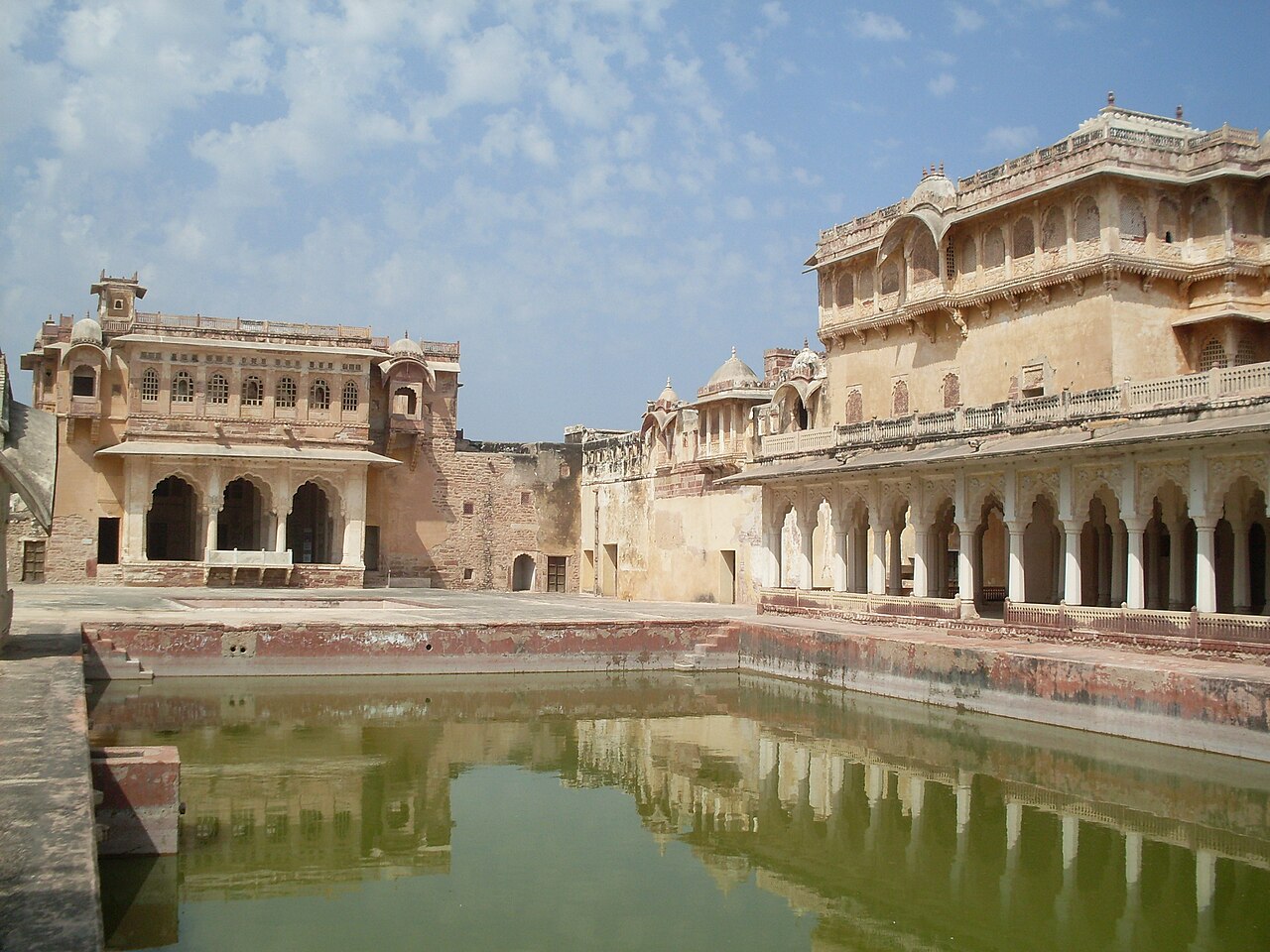Ahhichatragarh Fort: A Storied Citadel in the Heart of Rajasthan
Perched atop the Aravalli Range in the princely state of Rajasthan, Ahhichatragarh Fort stands as a formidable testament to the region’s rich history and architectural grandeur. Also known as Nagaur Fort, this ancient citadel is located in the historic town of Nagaur, and it unfolds a narrative of valor, culture, and the passage of time against the backdrop of the Thar Desert.
The origins of Ahhichatragarh Fort can be traced back to the early 12th century when it was established by the Nagavanshi dynasty. Over the centuries, the fort underwent numerous expansions and renovations under the rule of various Rajput clans, including the Chauhans and the Rathores. The fort’s strategic location along the trade routes between Central Asia and North India made it a pivotal stronghold for the rulers of Rajasthan.
One of the most distinctive features of Ahhichatragarh Fort is its sprawling complex, encompassing palaces, temples, baolis (stepwells), and gardens. The architecture seamlessly blends Rajput and Mughal styles, showcasing intricate carvings, ornate frescoes, and imposing gateways. The fort’s extensive network of courtyards and corridors echoes with tales of courtly life, battles, and the cultural efflorescence that marked the region’s history.
One of the notable structures within the fort is the Ranvas or the “Abode of Queens.” This enclave comprises a series of havelis or palaces that were exclusively reserved for the queens and their attendants. The Ranvas, with its delicate architecture and serene surroundings, provides a glimpse into the opulent lifestyle of the royal women who resided within the fort.
The deep-rooted history of Ahhichatragarh Fort is further etched in the walls of the Hadi Rani Mahal. This palace is dedicated to Hadi Rani, a legendary queen known for her sacrifice and devotion to her husband during a time of war. The intricately painted walls narrate the poignant tale of Hadi Rani, blending art and history in a compelling display.
The fort’s architectural splendor extends to its temples, including the Jain and Hindu shrines that dot the complex. The Nayaka ki Baori, a stepwell within the fort, is a marvel of medieval engineering, showcasing the intricate craftsmanship of the artisans of that era. The baoli not only served as a water reservoir but also as a social hub within the fort, where residents could gather and find respite from the desert heat.
The grandeur of Ahhichatragarh Fort is not confined to its physical structures alone. The fort plays host to the annual Nagaur Fair, one of the largest cattle fairs in Rajasthan. This vibrant event attracts thousands of traders, tourists, and locals, creating a colorful spectacle against the ancient backdrop of the fort. The fair is a celebration of Rajasthani culture, featuring folk music, traditional dances, and exciting competitions.
In recent times, efforts have been made to restore and preserve Ahhichatragarh Fort, ensuring that its cultural and historical significance endures for future generations. The fort stands not only as a tangible relic of Rajasthan’s past but also as a living testament to the resilience and endurance of its people.
In conclusion, Ahhichatragarh Fort is a captivating journey through the annals of Rajasthan’s history. Its majestic architecture, storied past, and cultural significance make it a jewel in the crown of the Thar Desert. From the echoes of ancient battles to the vibrant festivities of the Nagaur Fair, the fort continues to stand as a witness to the ebb and flow of time in this enchanting corner of India.

